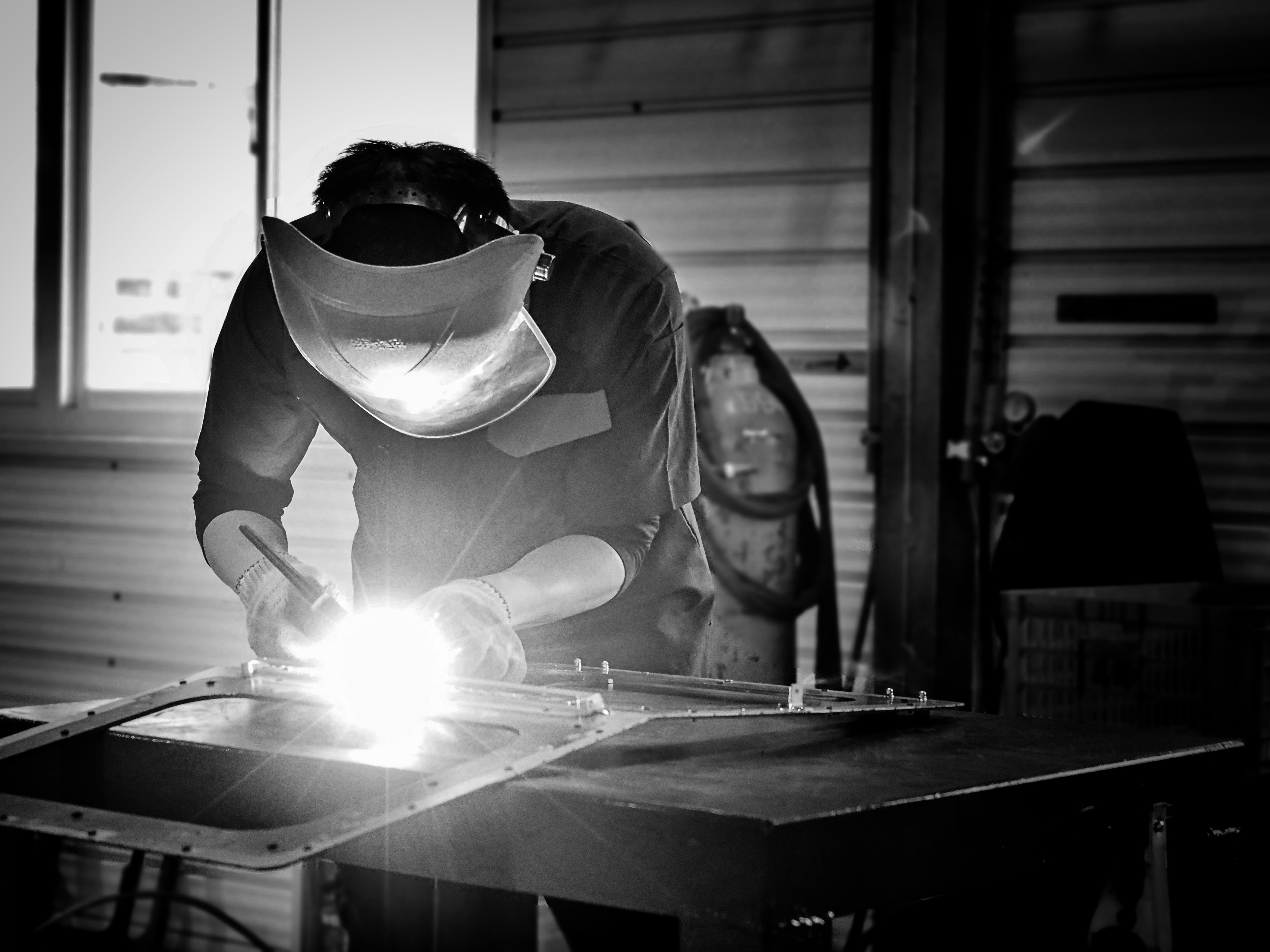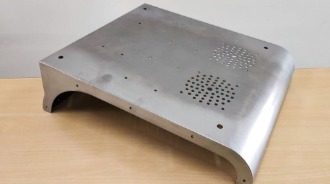
Sheet metal fabrication involves the processing of thin metal sheets through methods such as stretching, punching, and bending. The term "sheet metal" refers to metal sheets with a thickness typically below 6mm. Common materials used in sheet metal fabrication include steel (such as SPHC hot-rolled steel plate, SPCC cold-rolled steel plate, SECC galvanized steel plate, SGCC hot-dip galvanized steel plate), stainless steel (SUS304, SUS316), aluminum (AL5052), and copper. Distinguished from other manufacturing techniques, sheet metal fabrication encompasses multiple steps and processes, including laser cutting, NCT punching, shearing, folding, welding, and riveting. The end products of sheet metal fabrication often include support frames, equipment enclosures, internal components, and functional objects. Examples of such products include electronic control panels, medical equipment enclosures, airport automated gate enclosures or components, camera housing units, and food processing equipment enclosures and components. Sheet metal fabrication offers versatility in design and customization, allowing for the production of precise and functional components. It finds wide applications in various industries, including automotive, aerospace, electronics, and manufacturing. Our expertise in mechanical sheet metal fabrication ensures high-quality products that meet the demands of our discerning customers in the European and American markets.

3 main processes of sheet metal fabrication
Sheet Metal Fabrication: Shearing, Cutting, and Punching
Shearing, cutting, and punching are the three main processes in sheet metal fabrication. In this step, the desired shape of the sheet metal is achieved by shearing or cutting, and holes can be punched to remove excess material. This process is often considered a subtractive manufacturing process. The most widely used method is laser cutting, which can be further categorized into CO2 laser or more advanced fiber laser. Fiber laser consumes only one-third of the electricity compared to CO2 laser cutting, and its beam is finer, allowing for more precise cutting without causing burning or deformation. It is both accurate and energy-efficient.
Sheet Metal Fabrication: Forming
After laser cutting, the sheet metal is in a flat state and goes through the forming stage. The most common method of sheet metal forming is bending, where the metal is bent into shape. Other methods include mold stamping (convex/concave) and rolling, which are also used for forming sheet metal. Metal bending is different from folding paper; metal materials have certain hardness and toughness, requiring greater pressure for bending. The sequence of bends is also crucial, with the need to perform the first bend that does not interfere with subsequent ones. The level of equipment affects the precision of bending. For example, our company's "servo hydraulic hybrid" bending machine is more advanced than traditional hydraulic press brakes, offering more precise and stable bending angles.Sheet Metal Fabrication: Assembly
In this process, scattered components are assembled into a finished product using techniques such as welding, fastening with bolts, and riveting. Welding is the most common method, usually joining materials of the same thickness and material. Occasionally, dissimilar materials are welded, such as black iron and stainless steel. The two most common welding methods are CO2 welding, typically used for steel plates, and TIG welding, used for stainless steel or aluminum plates. The latest technology is fiber laser welding, as seen in our company's introduction of fiber laser automatic welding arms, which provide more stable heat energy and produce exquisite welds. The welding process generates high heat energy, which can cause metal deformation, so additional fixtures or jigs may be required to assist in the welding process. Proper alignment is crucial for most assemblies, including precision sheet metal components. Alignment techniques such as "locating points," "alignment teeth," or "hole insertion pins" are typically incorporated during the design stage.
Finally, different surface treatments are applied based on customer requirements.
For more detailed information on sheet metal fabrication, please refer to our company's main service offerings.
Photos of CMI sheet metal works:


